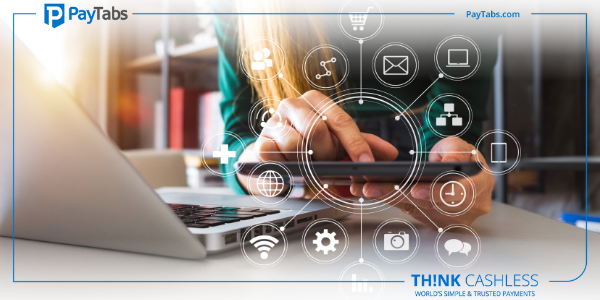Multichannel Selling: The Right Move Forward or Too Many Things at the Same Time?(Part 3)

How you interact with the customers during and after a sale are also tightly controlled. Even outside these marketplaces, sales is expanding into the realm of customer service. As some studies note, as many as 88% of online shoppers say they are less likely to buy from you if you’re not responding to complaints or service requests posted on social media. This customer service element extends into order fulfillment too.
Nearly every channel has its own way of handling the flow and interaction with customers. Each has its own journey and process, which means you’ll need some salespeople to put those things in place.
The nice bit is that a lot of this can be automated after the initial setup, so you’re not always trying to force a sale with a specific individual. However, the other side of the automation coin is that it’s got to be set up correctly or you push everyone down a path that’s not optimized to sell.
Order Fulfillment
E-commerce warehouses are in the news often because of conditions customers don’t want to hear about — that doesn’t happen everywhere, and we’re working to show your buyers that it’s not the norm. The reason that this unnamed behemoth gets so much attention is because of its reach and how it changed the online conversation to always be about two-day and same-day shipping.
For multichannel sales, that means having the ability to get things out the door. It’s leading more and more businesses to just outsource the warehouse part of their operations because of the complexity that comes with fulfillment. You not only need a system that can take all orders from all sources and combine them for your warehouse, but you have to keep things in stock, monitor inventory demand changes over time, hire people, fill boxes correctly, negotiate rates with carriers, and be able to handle when a product is returned or an order is canceled in the middle of it being picked and packed.
That’s a lot, and each new channel makes it more complicated. It’s often even too much for a single third-party fulfillment company to handle for everyone. Red Stag Fulfillment only works with about 12% of the e-commerce companies we speak with because of how much things like product size and weight or the number of orders you ship can dictate costs and efficiencies. We do refer that 88% to some other great fulfillment companies and they’re in this list of the best fulfillment companies for 2019.
Each carrier will charge you differently for your products based on weight, size, location, and your overall volume. At the same time, warehouses have different prices for these and other factors. It gets overwhelming quickly, and it’s why we always suggest that e-commerce companies looking at multichannel fulfillment have conversations with multiple warehouse and fulfillment companies. Some might be cheaper to ship from while others are cheaper to store at and understanding that can be the difference between having enough money to expand your marketing or going to the bank to try and secure a loan. You’ve got to ask.
3 Thoughts to Help You Decide
Research. Research. Research.
Okay, that’s one thought, but we’re having it in at least three distinct ways. To understand if the opportunity is there, you’ve got to research your customers, costs, and metrics.
In this thought process, customer research is mainly about who your audience is and where they operate. Are they shopping for goods like yours on multiple sites and channels? Do they purchase on these channels, or do you require so much research that most sales still end up happening on your website?
Typically, there’s no good reason to choose every channel. Sure, it’s tempting, but your audience isn’t everywhere (even if you want them to be). Do your homework to find out where the buyers are and seek out the channels you need to reach them.
Our second research point is about the costs you’re facing. Every new channel adds complexity, and that can be expensive. You’ll need to expand marketing budgets to grow across those channels — even if you’re not buying ads, it still takes people to post on social and respond to customer concerns quickly. Expertise is costly, so narrowing down your list of channels and then looking at related costs can help you find the best spots you can afford.
In your selection process, remember that everything costs. Your fulfillment company may charge more for adding new channels, or you might need to buy new software to integrate your store and warehouse with whatever is new. If you’re targeting a brand-new channel, you might need to pay to have a developer create custom support too. Everything costs money, but budgets aren’t unlimited.
The final research we’ll leave you thinking about touches on everything else here: data. Track everything you can think of and use it to inform all the other decisions and choices we talked about today. There’s a lot, and here are a few highlights:
- Customer data can help you understand if your old targets are still valid.
- Product performance can give you insight into the channels that work best for you, especially ads.
- E-commerce platforms can help you understand search volumes and if you need to switch up your keywords.
- Warehouse data can show if you’re getting orders out on-time and correctly. It can also highlight what gets returned.
- Channel specific data can show you when interest on a channel — especially around search and hashtags — is growing or dwindling, marking signs for a change.
- Competition data can help you find trends that your data hasn’t identified yet.
That’s the tip of the data iceberg, and there’s definitely a whole lot more lurking beneath the surface. Multichannel selling represents a significant opportunity for many, and it’ll come back to your audience and the data you have around them to see when it’s worthwhile to expand.





